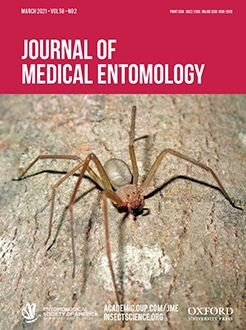Visceral leishmaniasis is spreading in Brazil where the main vector of its agent, Leishmania infantum Nicolle, 1908, is the Lutzomyia longipalpis (Lutz & Neiva, 1912) species complex (Diptera: Psychodidae: Phlebotominae), on which many of the activities of the visceral leishmaniasis surveillance program are based. However, there are areas where canine, and/or human cases have been occurring without the presence of this species complex as in the western part of the Greater São Paulo Metropolitan region, where Embu das Artes municipality is situated. In this area, Pintomyia fischeri (Pinto, 1926) has been implicated as potential vector of Le. infantum but so far its natural infection with this parasite has not yet been ascertained. Therefore, the present study sought to investigate the natural infection in sand flies of a CVL focus in Embu das Artes. The sand fly collections were undertaken with Shannon and CDC traps, monthly, between 1800 and 2100 hours from November 2018 to October 2019, inclusive. A total of 951 sand flies (457 males and 494 females), belonging to 10 species, were captured. Pintomyia fischeri was the predominant species (89.5%); of which 426 females were dissected and one of them (0.23%) was found to be harboring flagellates in its midgut. A sample of these flagellates was isolated in culture and characterized by a 234 base pair fragment of Leishmania heat-shock protein 70 gene (hsp70) and restriction fragment length polymorphism with Hae III restriction enzyme as Le. infantum. This finding reinforces previous evidence of Pi. fischeri as a vector of Le. infantum in foci of visceral leishmaniasis and highlights the importance of vector surveillance in areas where this species occurs.
How to translate text using browser tools
13 October 2020
Detection of Pintomyia fischeri (Diptera: Psychodidae) With Leishmania infantum (Trypanosomatida: Trypanosomatidae) Promastigotes in a Focus of Visceral Leishmaniasis in Brazil
Fredy Galvis-Ovallos,
Adriele Eiko Ueta,
Gabriella de Oliveira Marques,
Ana Maria Casagrande Sarmento,
Gabriela Araujo,
Carmen Sandoval,
Thaíse Yumie Tomokane,
Vânia Lúcia Ribeiro da Matta,
Márcia Dalastra Laurenti,
Eunice Aparecida Bianchi Galati
ACCESS THE FULL ARTICLE
It is not available for individual sale.
This article is only available to subscribers.
It is not available for individual sale.
It is not available for individual sale.

Journal of Medical Entomology
Vol. 58 • No. 2
March 2021
Vol. 58 • No. 2
March 2021
Leishmania infantum
natural infection
Pintomyia fischeri
sand fly
visceral leishmaniasis




